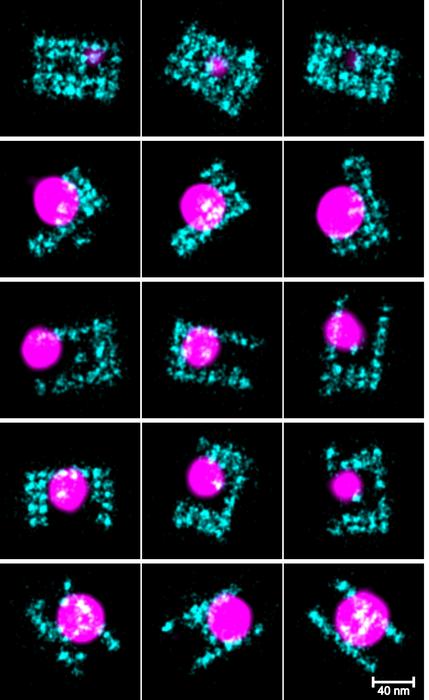| Aug 17, 2023 |
Cutting-edge imaging technique shines light on how DNA strands stack up
(Nanowerk News) In a new study, researchers at the Department of Biochemistry, Indian Institute of Science (IISc), have used a novel imaging technique to pinpoint how strongly adjacent bases – the building blocks of DNA – stack up on top of each other in a single strand. The findings open up possibilities for building complex DNA nanodevices and unravelling fundamental aspects of DNA structure.
|
|
Behind the seamless running of every living cell lies DNA – the hereditary vehicle carrying information for its growth, functioning and reproduction. Each DNA strand is usually made up of four nucleotide bases – Adenine (A), Guanine (G), Thymine (T) and Cytosine (C). The bases on one strand pair with those on the opposite strand to form the double-stranded DNA (A pairs with T and G pairs with C).
|
|
Two types of interactions stabilise DNA’s double helix structure. Base-pairing – interaction between bases on opposite strands – is more widely known, whereas base-stacking – interaction between bases in the same strand – is not very well studied. Imagine a zipper in which base-pairing is like the zip holding the two strands together, while base-stacking acts like the teeth of the zipper, ensuring a tight and secure connection. Base-stacking interactions are typically stronger than base-pairing, says Mahipal Ganji, Assistant Professor at the Department of Biochemistry, IISc, and corresponding author of the paper published in Nature Nanotechnology ("Single-molecule analysis of DNA base-stacking energetics using patterned DNA nanostructures").
|
 |
| Patterned DNA nanostructures (cyan) as imaged using DNA-PAINT super-resolution technique enabled for studying strength of base-stacking interactions (pink). (Image: Abhinav Banerjee)
|
|
To study all 16 possible base-stacking combinations, the researchers used DNA-PAINT (Point Accumulation in Nanoscale Topography). DNA-PAINT is an imaging technique that works on the principle that two artificially designed DNA strands – each ending on a different base – when put together in a buffer solution at room temperature, will bind and unbind to each other randomly for a very short time. The team tagged one of the strands (imager strand) with a fluorophore that would emit light during binding and tested the stacking of this strand on top of another docked strand. The binding and unbinding of different strand combinations (based on the end bases) were captured as images under a fluorescence microscope.
|
|
The time taken for the binding and unbinding of the strands was found to increase if the interaction between the stacked bases was strong, explains Abhinav Banerjee, first author and PhD student at the Department of Biochemistry. Therefore, using the data obtained from DNA-PAINT, the researchers built a model that linked the timing of binding and unbinding with the strength of interaction between the stacked bases.
|
|
Using this technique, the team was able to uncover interesting insights into base-stacking. For example, adding just one more base-stacking interaction to a DNA strand seems to increase its stability by up to 250 times. They also found that each nucleotide pair had its own unique stacking strength. This information allowed the team to design a highly efficient three-armed DNA nanostructure that could potentially be built into a polyhedron-shaped vehicle for biomedical applications, like targeting specific disease markers and delivering targeted therapies.
|
|
The researchers are also working on improving the technique of DNA-PAINT itself. Banerjee says that leveraging on stacking interactions, they plan to design novel probes which would expand the potential applications of DNA-PAINT.
|
|
Moreover, the research has broader applications beyond imaging and nanotechnology, according to the scientists. Ganji hopes that these findings can be used to study fundamental properties of single and double-stranded DNA which, in turn, may shed light on DNA repair mechanisms, the failure of which leads to many diseases including cancer.
|

